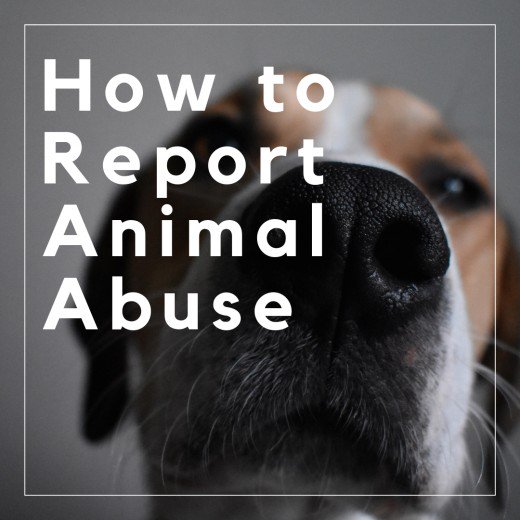The digital age has ushered in a paradoxical era where the visibility of animal cruelty has amplified. On one hand, social media platforms and streaming services enable the dissemination of critical awareness regarding animal welfare; on the other, these same channels occasionally expose individuals to graphic and distressing content reminiscent of cruelty. As more people congregate on the internet, it is imperative to cultivate a vigilant community ready to take action against such abhorrent practices. Reporting animal cruelty online may seem daunting, but it can be achieved in five easy steps. By adhering to this structured approach, you can contribute to fostering a safer environment for voiceless beings.
Step 1: Identify the Nature of the Abuse
Before launching into the reporting process, it is essential to ascertain the specific type of animal cruelty being witnessed. Animal abuse can manifest in various forms, from neglect and physical violence to exploitation in entertainment. Not all images or videos depicting animals are representative of cruelty; thus, contextual understanding is paramount. Take a moment to analyze the content. Is it depicting animals in distress? Are there signs of injury, malnutrition, or significant discomfort? Categorizing the abusive actions can facilitate more effective reporting.
Step 2: Gather Evidence
Once the nature of the abuse has been identified, the next crucial step involves collecting comprehensive evidence. Screenshots, video clips, and URL links are vital components that bolster your case when reporting. Document relevant details surrounding the incident: the time it occurred, the particular social media handle or organization involved, and any visible identifiers such as location or specific individuals. Compiling detailed evidence not only strengthens your report but also aids in expediting the process for authorities who may investigate the claim.
The old adage “a picture is worth a thousand words” stands true in this context; unambiguous visual documentation can convey the urgency and severity of the situation, compelling action from bystanders and officials alike. Aim to curate a file that encapsulates the essence of the cruelty, while being cognizant of privacy concerns that may arise when sharing personal information or identities involved in the incident.
Step 3: Choose the Right Platform for Reporting
With a myriad of options available for reporting animal cruelty online, discerning the most appropriate platform is imperative. Many jurisdictions have specific animal control agencies tasked with addressing reports of cruelty; visits to their websites often provide clear mechanisms for lodging complaints. For those witnessing abuse on social media, most platforms like Facebook, Twitter, and Instagram have dedicated reporting channels to flag abusive content or behavior.
Moreover, consider reaching out to established animal rights organizations. Groups such as the ASPCA or Humane Society often have formal procedures in place for reporting abuse, allowing them to mobilize resources effectively. Recognizing the correct avenue to deliver your concerns can yield significantly more impact than a scattershot approach.
Step 4: Provide Comprehensive Details
The act of reporting is not merely about submitting information; it is paramount to furnish details in a clear, concise, and coherent manner. When filling out the requisite forms on websites, strive to be thorough without being verbose. Include information such as your own contact information (if comfortable), a clear delineation of the witnessed cruelty, and the evidence you have gathered. This includes attaching any relevant images or videos and linking to the original content—ensuring that you follow legal and ethical guidelines when sharing sensitive materials.
Alongside the factual evidence, incorporate any emotional responses you felt during the incident. While it is important to maintain professionalism, articulating the emotional ramifications can sometimes compel officials to act faster. This element of human engagement can serve as a catalyst for change, propelling empathetic responses from decision-makers.
Step 5: Follow Up on Your Report
Reporting animal cruelty is an act of advocacy, but it is not always a definitive solution. After submitting your report, take the initiative to follow up. Reach out to the organization or platform you reported to and inquire about the status of your complaint. Many agencies appreciate proactive individuals who are invested in the outcome; a tenacious approach can ensure that the issue does not dissipate into the ether of the internet.
Keep in mind that, while you may not observe immediate results, your actions contribute to a cumulative effort towards ending animal cruelty. Speaking out, even in the face of frustration or helplessness, aligns everyone involved—a collective voice drawing attention to the often-ignored plight of suffering animals.
The omnipresence of animal cruelty across various digital landscapes serves as a stark reminder of our collective responsibility. By navigating the process of reporting abuse effectively, you champion the cause of those who cannot voice their suffering. There lies a profound complexity in our fascination with animals; they hold a mirror to our humanity, compelling us to evaluate our values and actions. Engaging thoughtfully not only empowers individuals but also fosters a more compassionate society, ensuring that every creature—be it seemingly insignificant or imperiled—receives the empathy it deserves.
Take action today; the internet can be a powerful tool for positive change. Armed with education, determination, and this guide, you are now poised to become an advocate for those who depend on us. By committing to this responsibility, we inch closer to a world void of cruelty and filled with kindness towards our animal companions.








